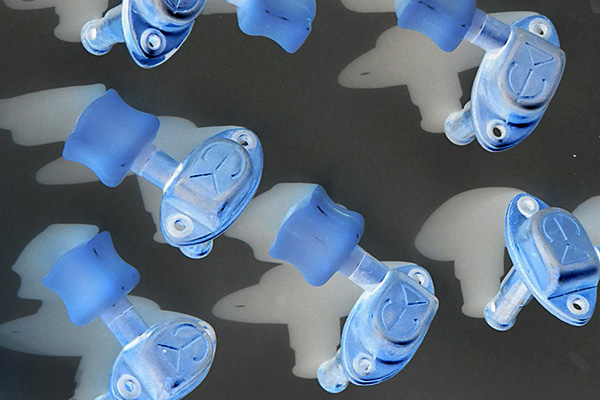
Close-up #46: Tuning machines, part 2 / introduced 1940–1955
This is part 2 of an overview about the tuning machines used by Epiphone – covering the tuners introduced between 1940 and 1955.
See part 1 for the tuners introduced 1931–1939, also containing an introduction and general remarks.
7. Waverly, strip, bell-end (used 1940–42; 1955)
- 3-on-a-strip unit, bell-end plates, outline groove
- nickel plating
- plastic buttons
- on lower models
Waverly strip tuners with rounded "bell-end" plates had been around since the 1920s, and started to appear on lower Epiphone archtops and electric models around 1940 – and discontinued in 1942.
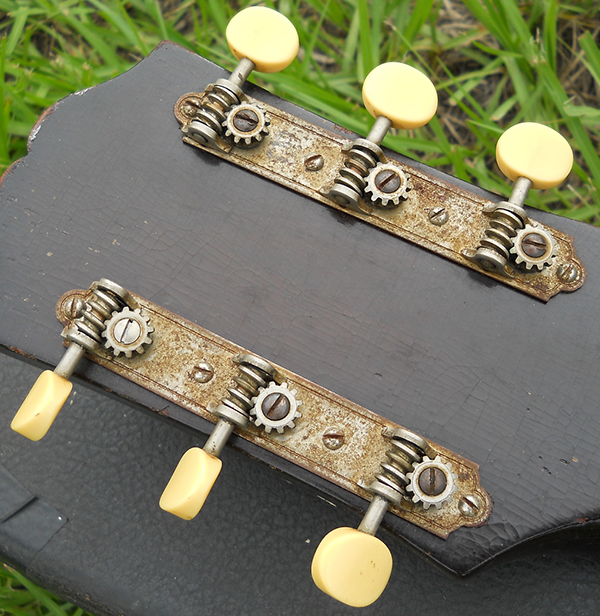
The shape of the worm bearings varied: On 1940 instruments the bearing tabs typically have a rounded shape, as pictured above. By 1941 most examples show the square tabs shown below.
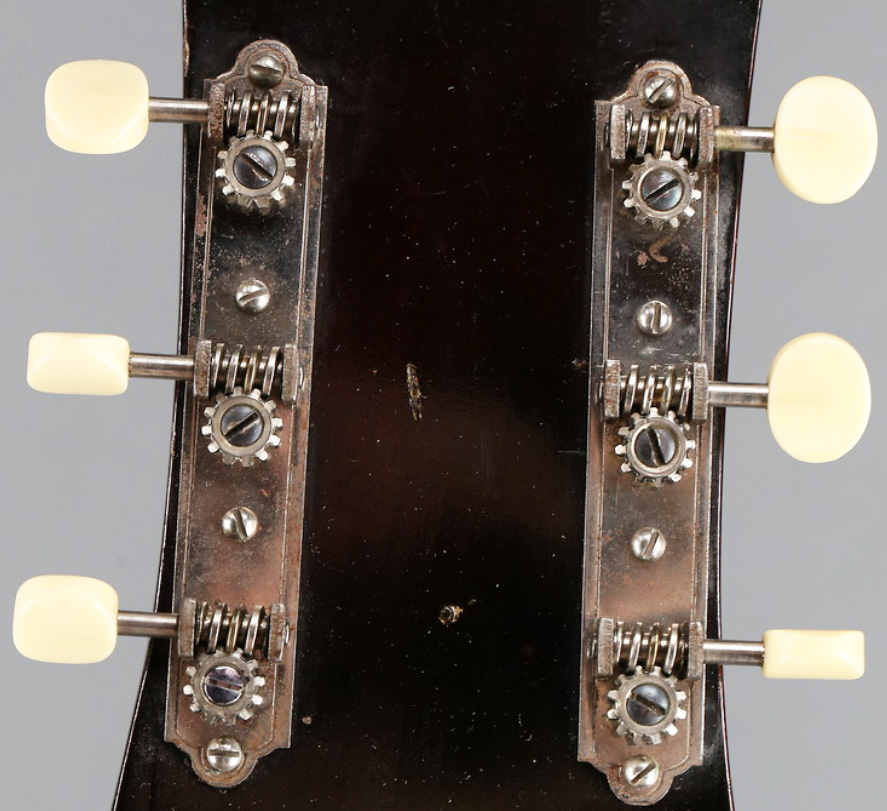
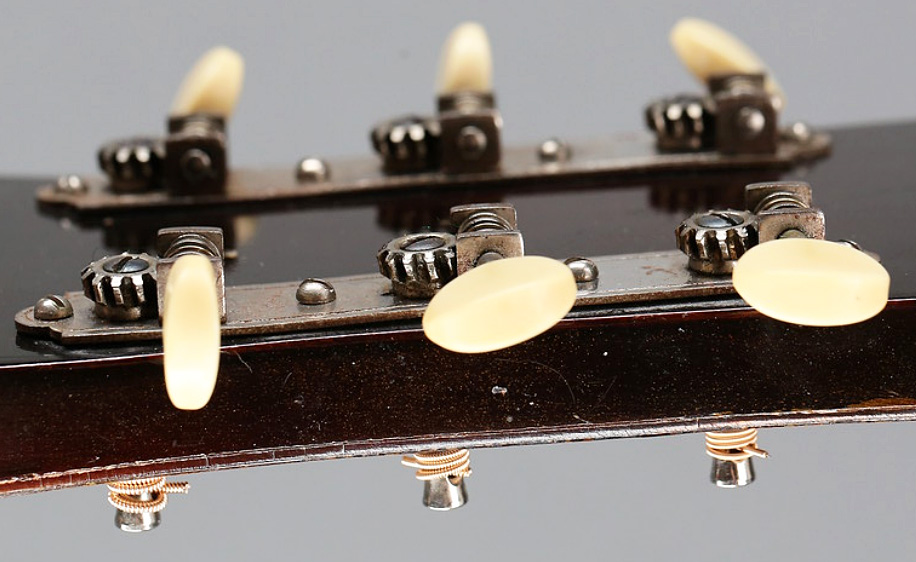
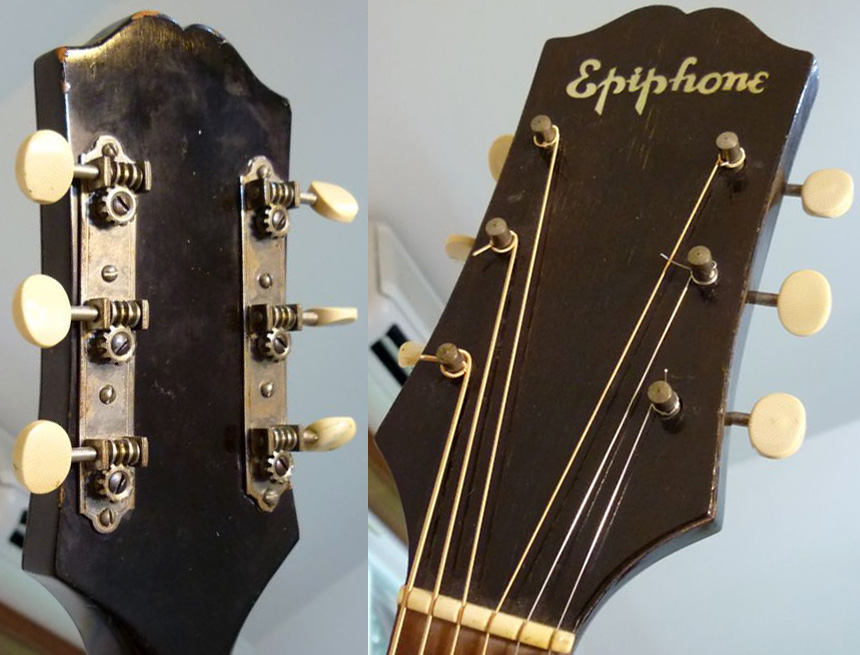
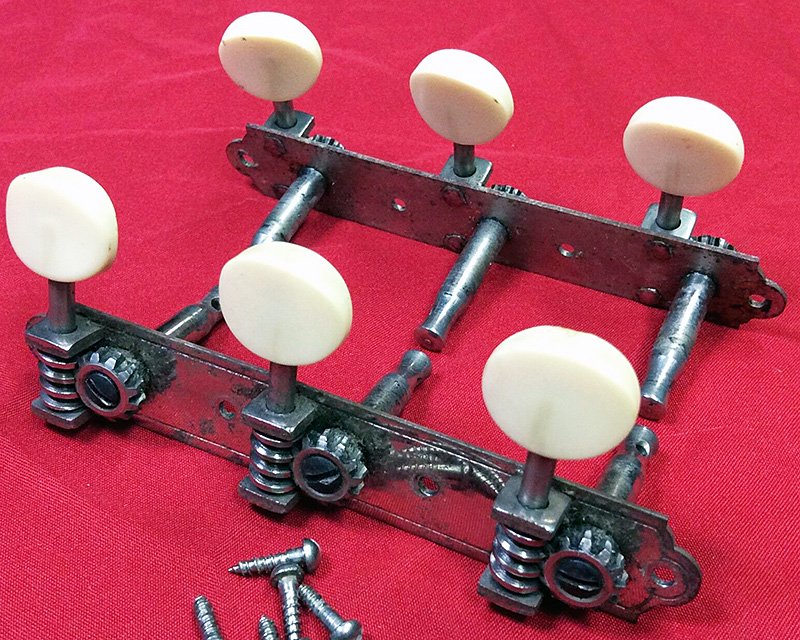
Footnote: In 1955, a post-war version of a Waverly strip tuner with bell-end plate briefly appeared on the short-lived Volpe model (pic below). Note the hash-marked plates and rounded worm bearings which are similar to tuner 12.
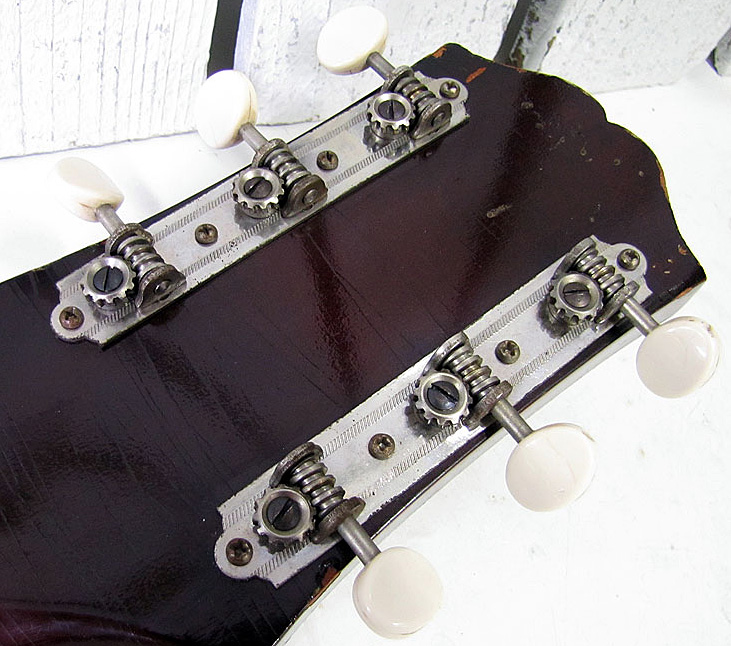
8. Waverly, single, "yoda head" (used 1940–42, 1946–52)
- single unit, plate with "yoda head" ends; post-war plate thinner, by 1949 with hash mark pattern
- nickel plating
- metal or plastic buttons
- hexagonal bushings (by 1946)
- on middle models
These single tuners are colloquially dubbed "yoda head" due to the distinctive shape of the plate ends which remind of the Star Wars character.
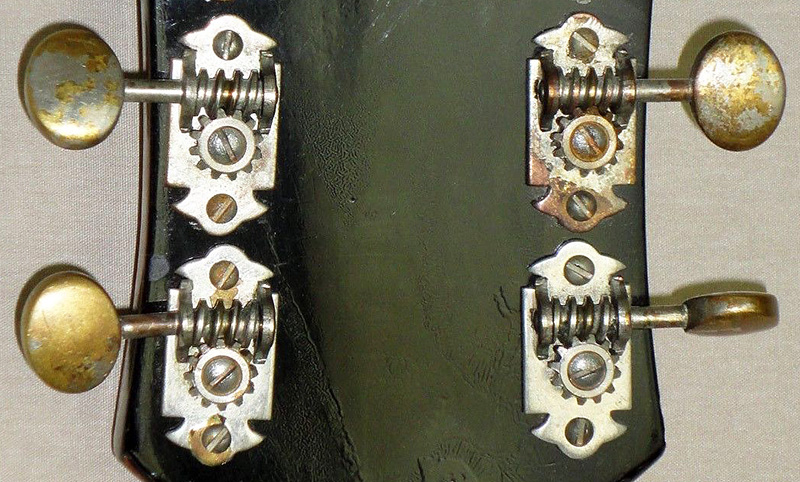
Above: The first "yoda head" tuners – with metal buttons – were installed on some Triumphs around early 1940, but the plastic button version is more often seen on lower models before WW2 – as shown below on two 1940 Blackstones.
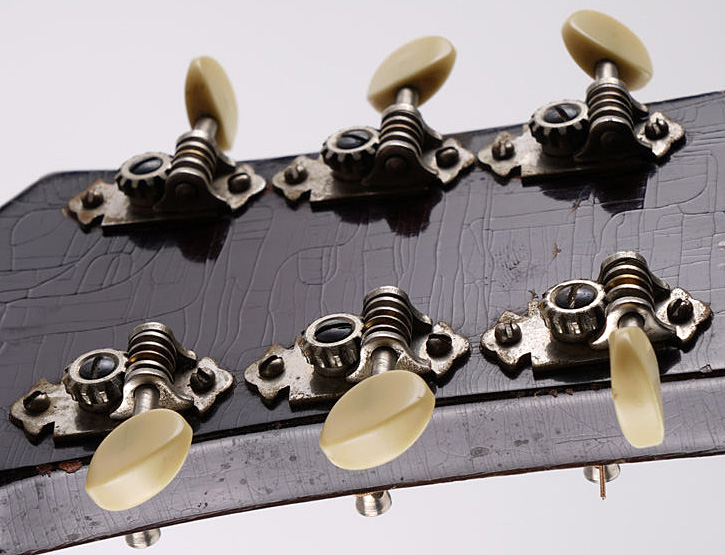
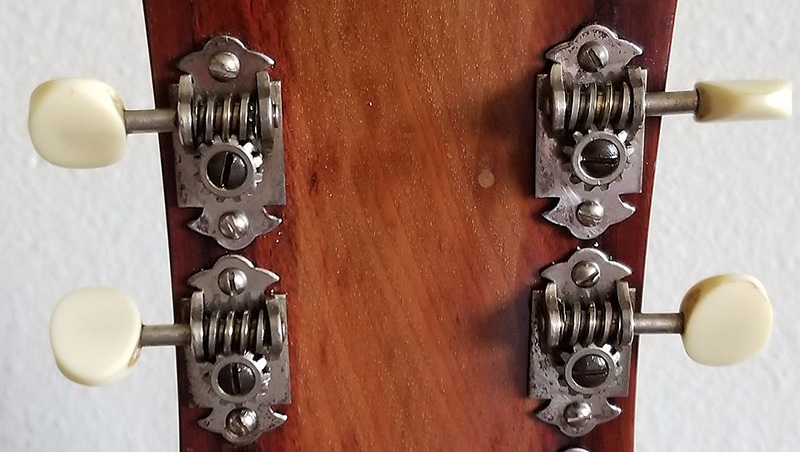
Waverly "yoda head" tuners were not used on wartime Epiphones (1943–45). After the war, they were reintroduced sporting somewhat thinner plates – with plastic or metal buttons, as seen on the 1947 Spartan pictured below. By this time, Phillips screws became common (but not exclusively used).
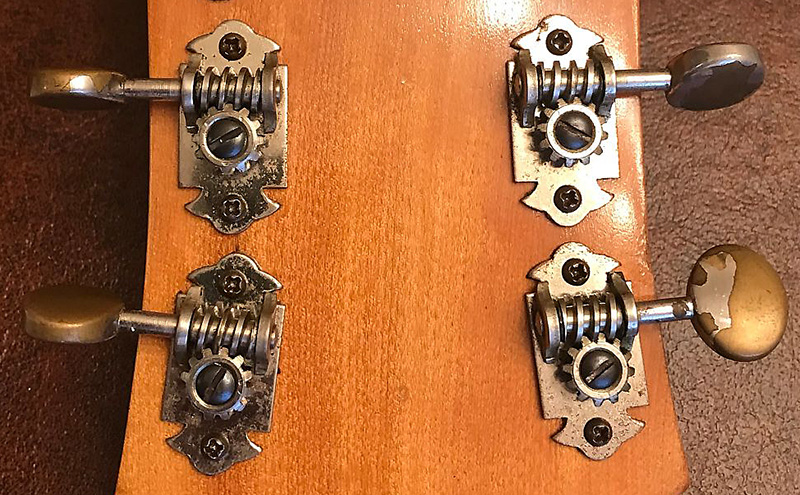
By 1946 tuner bushings generally became standard also on lower models – typically hex-type bushings (example below: 1946 Blackstone).
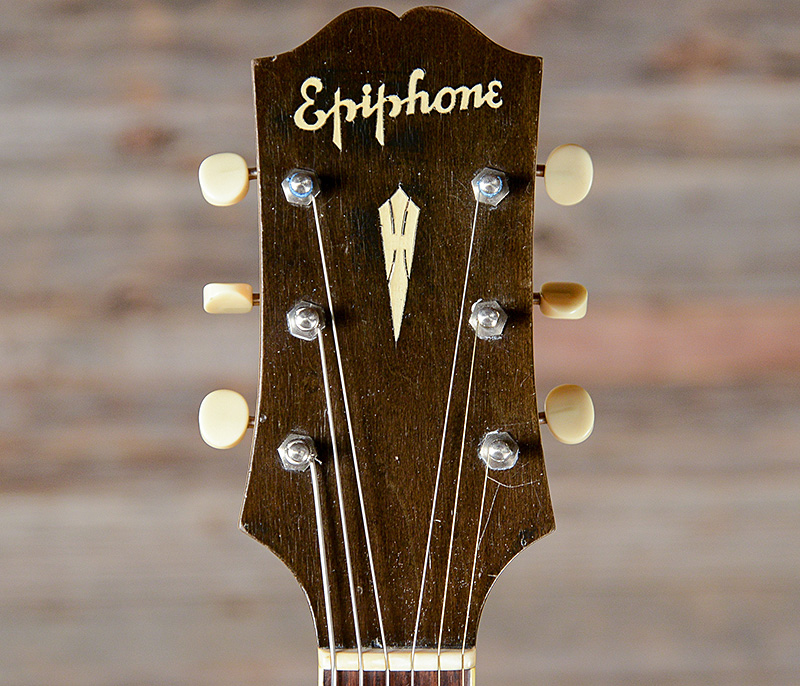
By 1949 a hash mark pattern appeared on the plates, as seen below on two Zenith models from 1949 and 1950.
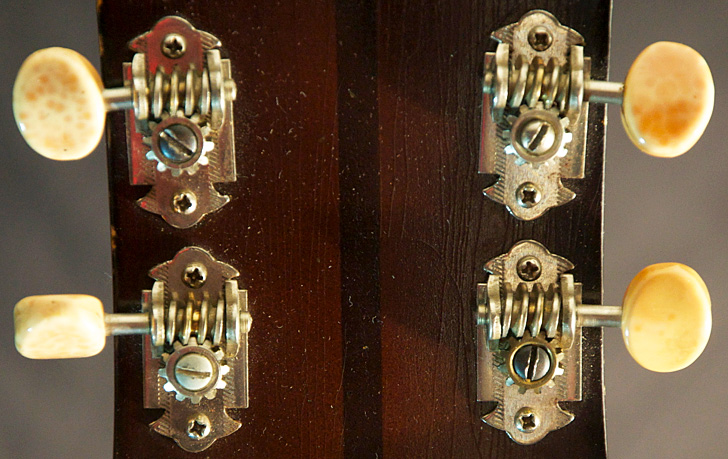
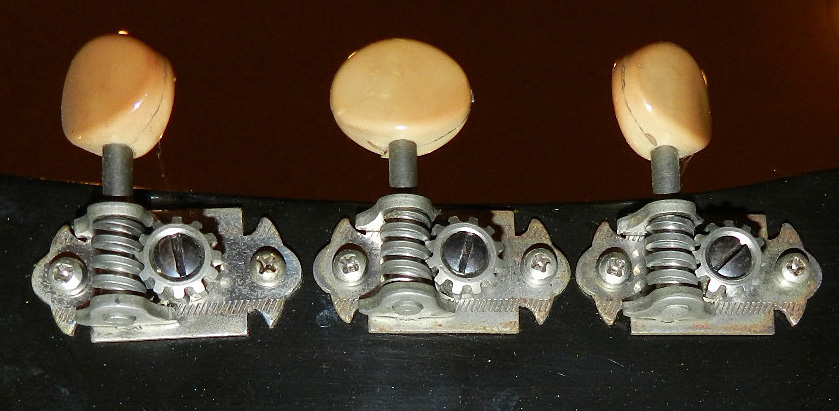
9. Kluson, single, riveted gear (used 1943–44)
- single unit, plate with two-point ends, riveted gear
- nickel plating or gun metal
- white plastic buttons
- on lower models
In 1943, John E. Kluson filed another patent for a tuner which became widely used on guitars made during WW2 – probably due to its metal saving features such as very thin cog wheels, riveted to the string post instead of screwed as before (see part 1, tuner 5.).
By 1944, the 3-on-a-strip version of the Kluson tuner (see 10.) took over on all lower Epiphone models.
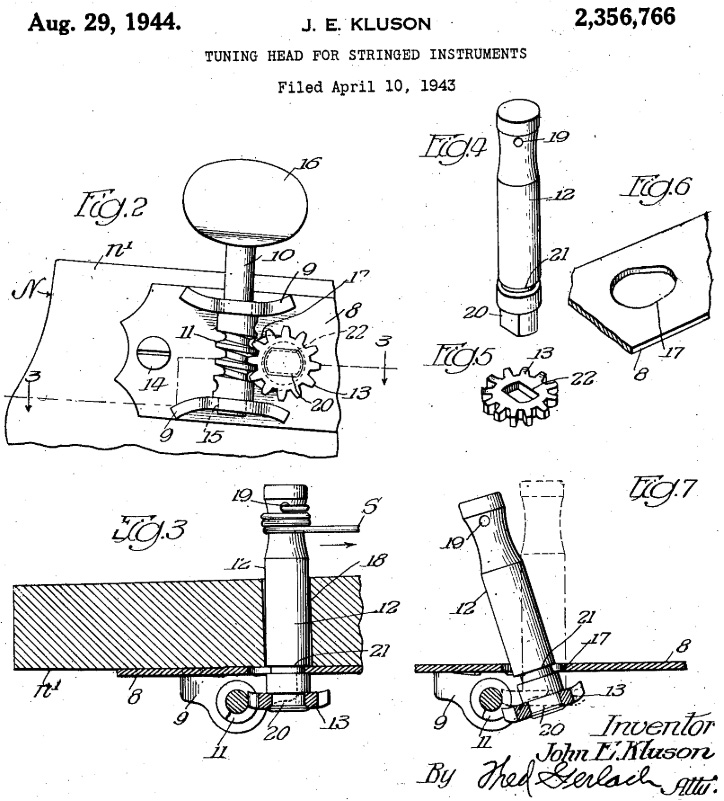
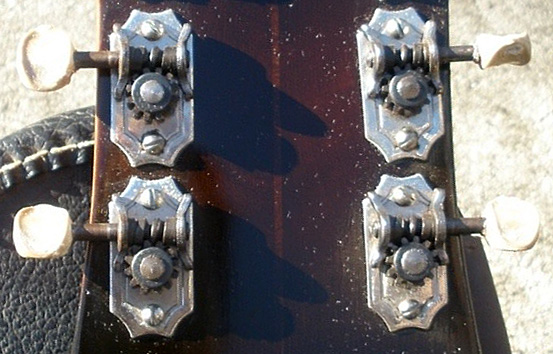
The late 1942 Zenith above was among the first receiving the riveted version of the Kluson single tuners in early 1943. Below a 1944 Zenith.
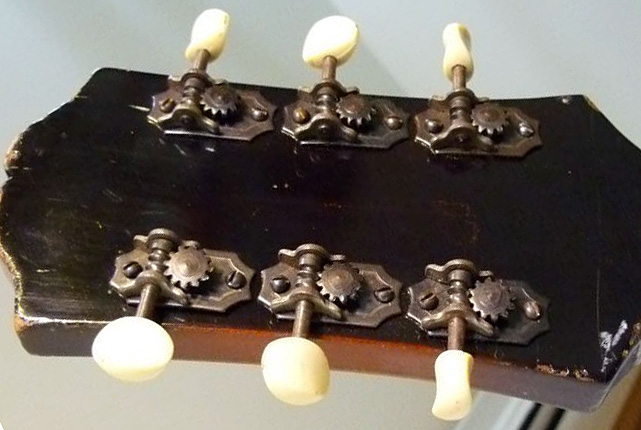
Some wartime examples had a gunmetal finish, as seen on this 1944 FT 45.
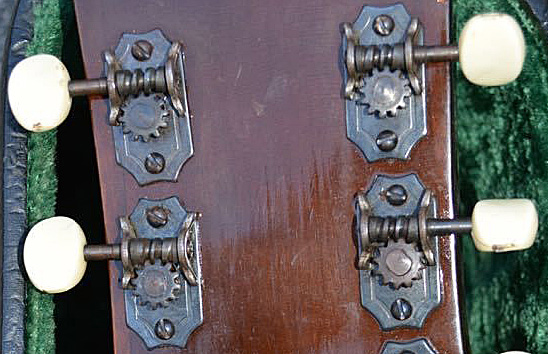
10. Kluson, strip, riveted gear (used 1943–46)
- 3-on-a-strip unit, plate with two-point ends, riveted gear
- nickel plating
- white or black plastic buttons
- on middle/lower models
These strip tuners were based on the patent filed by J. E. Kluson in 1943 (see above 9.) – and widely used on middle/lower models until after WW2. Many examples are seen with black buttons, but not exclusively.
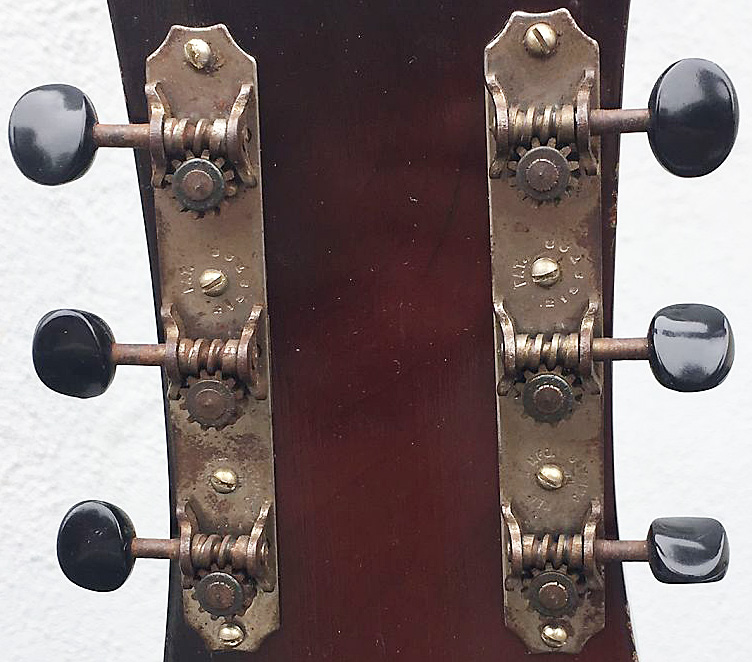
Pictured above a very early example with riveted cog on a late 1942 Olympic – still with the manufacturer's stamp on the plate (missing on later examples).
The example below on a 1945 Zenith below shows very thin cog wheels.
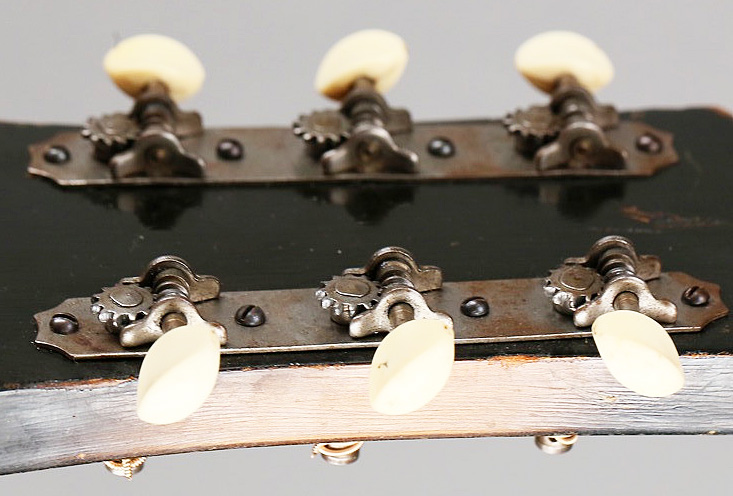
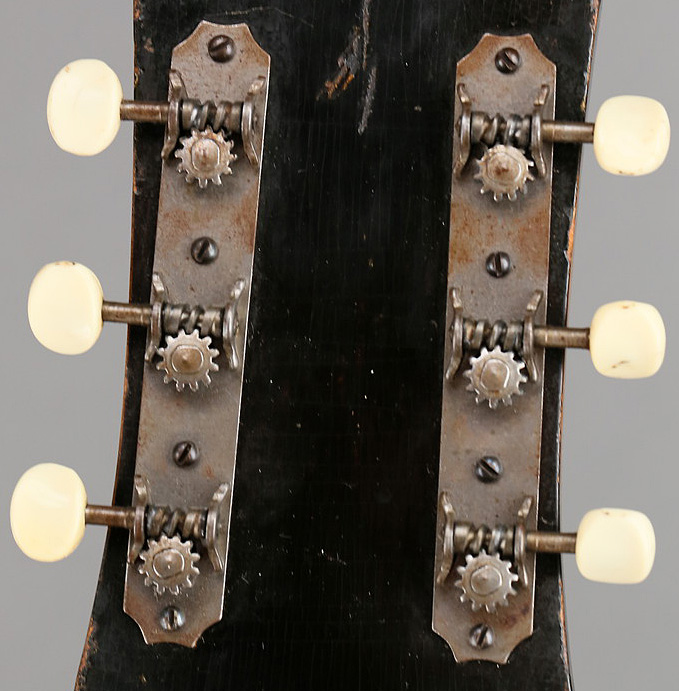
11. Waverly, strip, post-war square-end (used 1949–54)
- 3-on-a-strip unit, square-end plate
- nickel plating
- plastic buttons
- hexagonal bushings
- on lower models
These plain strip tuners started to show up in 1949 on the newly introduced low-end Byron and Kent models – below on a 1949 Kent Hawaiian.
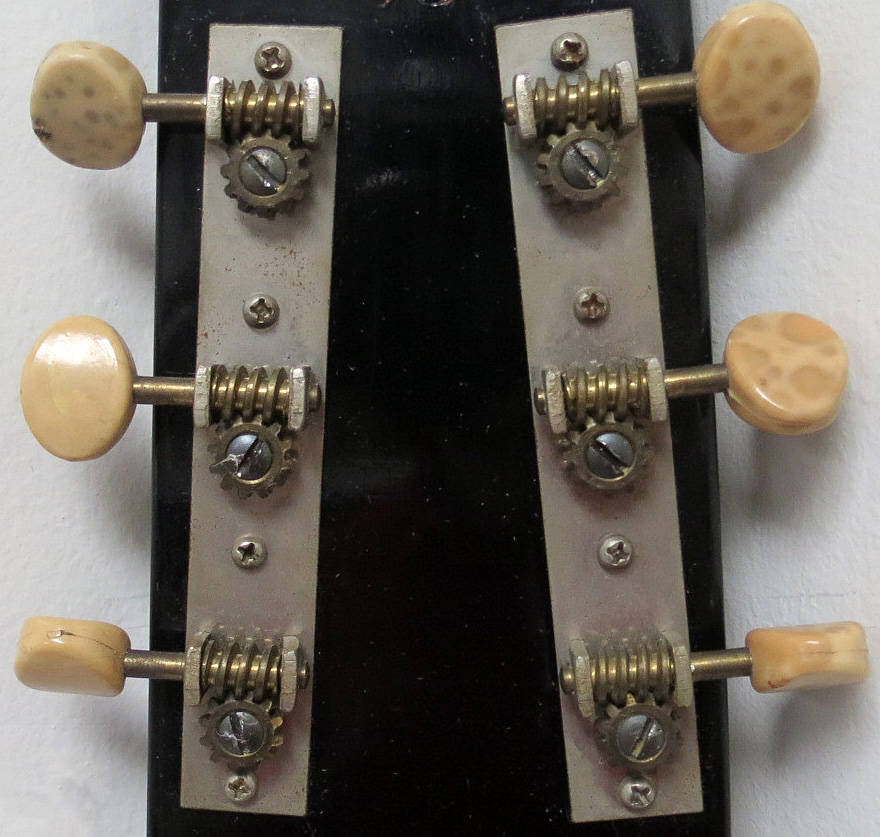
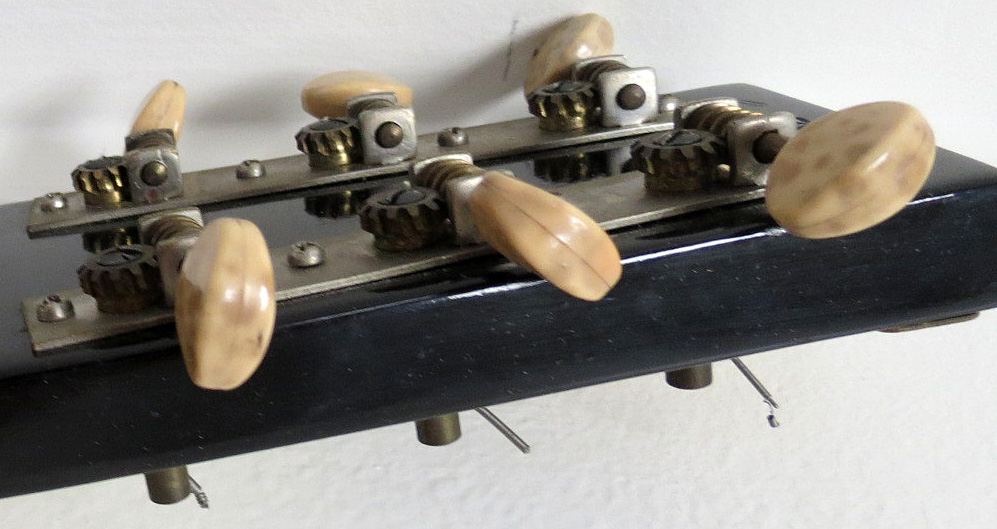
Note the square-shaped bearings which are similar to other pre-war Waverly strip tuners (see 7.) – and also much like the Waverly tuner illustration in the 1935 Chicago Musical Instruments (CMI) catalog.
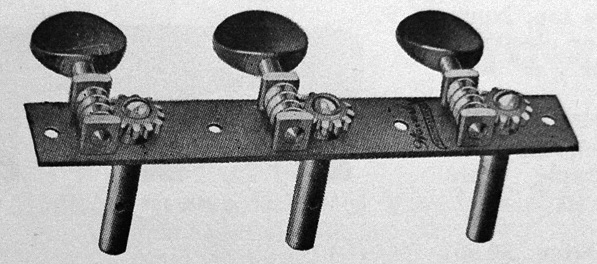
12. Waverly, single, bell-end (used 1952–56)
- single unit, bell-end plates, hash mark pattern
- nickel plating
- metal or plastic buttons
- hexagonal bushings
- on middle/lower models
Around 1952, Waverly-made single units with bell-end plates began to replace the "yoda head" tuners (see tuner 8.). Note the same hash mark pattern on the plates. Pictured below: plastic buttons on a 1952 Zenith, metal buttons on a 1953 Devon.
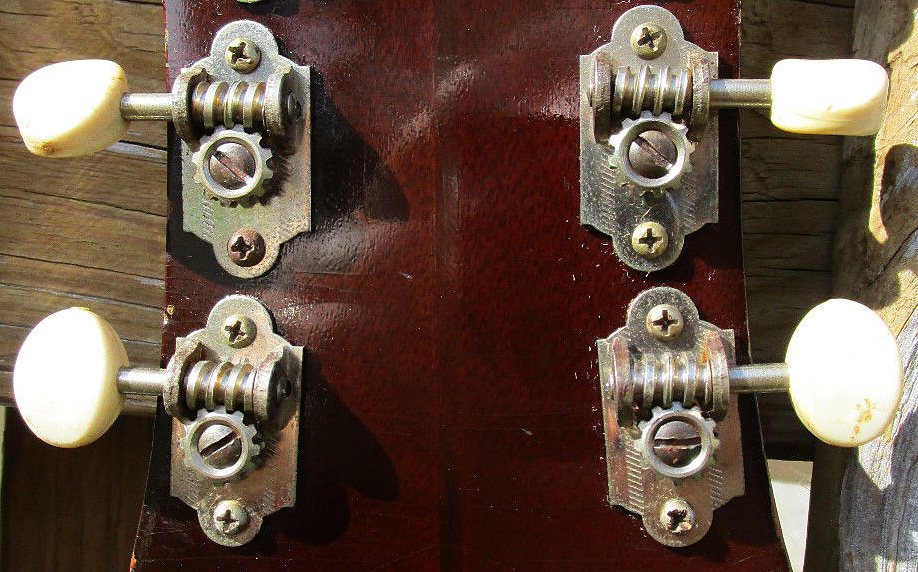
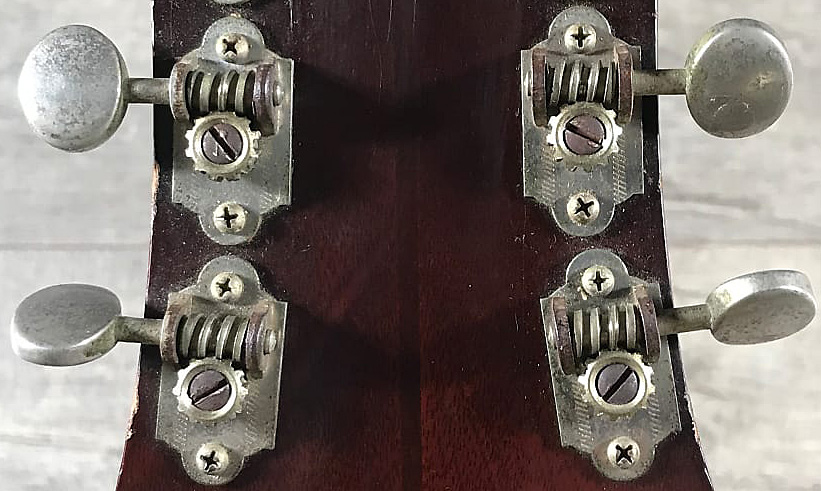
Below a 1953 FT 79: Note the rounded shape of the bearings – different from pre-war Waverly bell-end tuners (see tuner 7.).
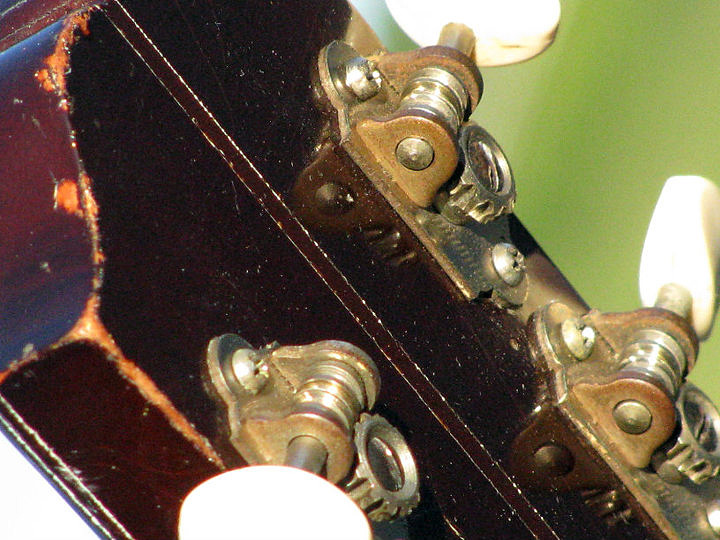
Summary part 2 – tuning machines
introduced 1940–55
The table below summarizes the tuners typically found on acoustic archtop models per year. For earlier tuners see summary part 1. For detailed tuner info of any Epipone model see models.
Abbreviations: ni=nickel plated, met=metal buttons, white=white plastic buttons, b/w= black or white buttons.
| Model |
7. strip Waverly bell-end |
8. single Waverly yoda |
9. single Kluson riveted |
10. strip Kluson riveted |
11. strip Waverly square |
12. single Waverly bell-end |
| Devon |
1949–52 ni, metal |
1953–56 ni, metal |
||||
| Spartan |
1946–49 ni, white |
1943–46 ni, b/w |
||||
| Blackst. |
1940–42 1946–49 ni, white |
1943–46 ni, b/w |
||||
| Zenith |
1940–42 1948–52 ni, white |
1943–44 ni, white |
1943–46 ni, b/w |
1952–54 ni, white |
||
| Ritz | 1940–42 ni, white |
1943–45 ni, b/w |
||||
| Olympic |
1940–42 ni, white |
1943–45 ni, b/w |
||||
| Byron |
1949–54 ni, white |
Note: This overview is subject to updates whenever
new evidence surfaces.
(Feb 11, 2019 – with later additions)